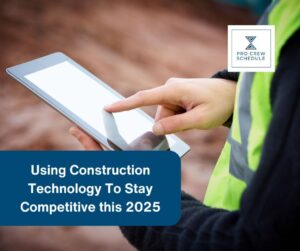Managing eco-friendly construction projects involves building materials and processes that are resource-efficient and environmentally responsible throughout the lifetime of a building. Long dismissed for being expensive, green buildings have seen a surge in popularity thanks to the many advantages over traditional buildings that range from environmental to economic and social.
Growing awareness of the impact brought to the environment by consumption has construction companies more interested than ever to learn more about green practices and sustainability. Since the construction industry is responsible for approximately 39% of greenhouse gas emissions into the atmosphere, contractors and subcontractors alike may be especially close to scrutiny.
Currently, finding more eco-friendly ways to manage tasks in construction operations and greener activities can help demonstrate sustainability that can help your business by drawing in environmentally aware clients, as well as help mother earth breathe by reducing the emission of carbon footprints.
In this blog, we will show you eight key reasons why you should consider using eco-friendly materials when planning your next construction project and few green practices that you can incorporate into your business— whether you are a general contractor, a subcontractor, or a client who is interested in making the planet a little better.
Let’s dive right in!
8 Benefits of Using Green Materials To Your Construction Project
1. Low Operation and Maintenance Cost
Eco-friendly buildings incorporate unique features that ensure efficient use of construction resources such as energy and water. For instance, by using lighting strategy and a lot of daylight, green buildings reduce the amount of power typically used in lighting systems; This also allows the building owners to save as much as a third of their energy and water bills. Given that maintenance and operating cost can account for up to 80% of the lifetime cost of a single building, reducing such costs dramatically increases the earning of building owners who would opt to rent out their green buildings.
Even though constructing an eco-friendly building may be slightly more expensive than the traditional buildings we are accustomed to, the reduced maintenance and operation cost that green buildings bring make them much cheaper in the long run.
2. Efficient Use of Energy
Designers of green buildings strive as much as possible to remove reliability on energy from non-renewable sources like coal, for example. They employ this strategy by installing solar panels to maximize the use of solar energy from the sun and designing windows to allow more natural light possible. With this, they significantly reduce the dependency on artificial light and tools to derive it from. These and other green methods deliberately ensure that the building efficiently uses renewable energy. Efficient use of energy is essential not only for the occupants and owners of the building but also for mother earth because non-renewable energy cause preventable pollution that can affect the environment, apart from being incredibly expensive.
3. Better Indoor Environment Quality
The indoor environment quality of a building depends on its conditions and how they affect the occupants of a specific structure. These conditions include ergonomics, lighting, air quality, and thermal conditions. Good indoor environment quality protects the building inhabitants’ health, which reduces stress and improves their overall quality of life. Green buildings make this possible by installing operable windows that let in as much sunlight as possible and choosing building materials that won’t emit elements that are dangerous to the health of people and even animals for those who also have pets in their homes.
4. Water Efficiency
Water efficiency refers to the consumption of water resources to save water and ensures that the present and future generations enjoy a steady and enough supply of clean water. Green buildings consider using other alternative water sources like rainwater, for example, reducing the amount of water waste by installing efficient plumbing fixtures. Through this, the strain caused by sharing water resources will be reduced due to the intentional installation of systems that purify water instantly and enable recycling when possible.
5. Enhances Overall Health
People who live in green structures enjoy many health benefits compared to those who occupy traditional buildings. Similarly, using greener material can also build better construction crew management as it enhances the health of your workers during operations, and the younger generation of workers opt for companies that care about their crew. This is because the green building designer considers the safety of the materials in construction. For example, eco-friendly construction companies don’t use plastic by-products that have been found to emit toxic materials. For example, toxic substances, like carcinogens, cause breathing difficulties and increase the risk of getting cancer.
6. Efficient Use of Materials
Material Efficiency refers to the use of physical materials and processes to allow the minimum use of raw materials without compromising the quality of the output; furthermore, the processes should generate as minimal waste as possible. To achieve this level of material efficiency, eco-friendly construction companies use long-lasting building materials, recycle and reuse some materials, and design buildings in such a way that allows the use of fewer materials. When it comes to the process, the designers also consider less energy, water, and raw materials. Taking all these into account help achieve material efficiency in the construction industry that generates the most waste during its operations.
7. Cleaner Mother Earth
By reducing the usage of non-renewable resources that are harmful to the environment like coal, green buildings are indeed ambassadors in helping to keep the environment clean. Additionally, the less consumption of raw materials and incorporating natural strategies in designing buildings significantly decreases the demand for needless processing and manufacturing that generate all sorts of pollution. Moreover, by reducing the level of carbon oxide (IV) emitted into the atmosphere, they help slow down the pace of climate change.
8. Reduces Demand for Local Resources
As our population increases, locally shared resources such as energy and water come under a considerable amount of pressure. However, green buildings can reduce the strain using processes and technologies that increase water, energy, and material efficiency.
3 Green Practices You Can Incorporate Into Your Construction Operations
1. Replace Conventional Building Materials with Greener Counterparts
Researchers on sustainable construction have discovered that the carbon oxides produced during manufacturing materials account for as high as 93.4% of the total construction carbon emissions. Many traditional building materials, such as concrete hollow blocks and asphalt shingles, can produce a severe impact on our environment. However, their sustainable alternatives can significantly reduce the number of carbon emissions produced in manufacturing these materials.
Bamboo, for instance, is a known biodegradable material with a fast-growing resource. It has a relatively high strength to weight ratio and higher compressive strength than brick or concrete. This is typically used for indoor construction, like cabinetry and flooring, but can also be considered for outdoor use.
Cork, similarly, offers the same benefits and is impervious to water. Its ability to absorb noise and shock also makes it a competitive option for floor tiling and insulation.
2. Take Advantage of Eco-Friendly Construction Equipment and Tools
Electric vehicles and tools, rather than gas-powered ones, can help you reduce the emissions produced on daily work operations. More efficient lighting and equipment can also benefit your operations by cutting down the amount of energy a particular construction project will consume. Every small transition site equipment can make a noticeable difference for a project. LED lighting, for instance, is a likely more energy-efficient substitute than conventional lighting counterparts. Simply swapping out traditional bulbs with LED lights can help reduce the amount of electricity used to light up a project.
An effective maintenance scheduling can also help by reducing the risk of generator failure. Furthermore, this can also eliminate unnecessary downtime and extend the lifespan of power-generating construction equipment. Less downtime would also mean less energy spent on waiting for repairs, and an extended lifespan of power-generating equipment means fewer emissions produced in manufacturing new equipment.
Deciding on building equipment to invest in is also crucial for construction companies. Since project managers will be utilizing installed equipment for years, these can prove to have a more significant impact than on-site construction practices can ever do.
3. Optimize Transportation and Travel
Good project management for construction practices can also benefit your project to reduce the toxic emission to the environment. Transportation and travel— like transporting workers and bringing building materials on-site— can significantly influence the production of construction emissions.
Simple management strategies can significantly help you remove travel and transportation from your daily activities. More than minimizing the release of toxic gases harmful to our environment, this can also dramatically cut down the miscellaneous expenses for your project.
Green Buildings Is The Future Construction
As great benefits of green buildings show, it is possible for the people to effectively meet all their present needs without endangering the environment and depleting resources to make it hard for future generations to survive comfortably. Green buildings use unique construction techniques that make sure resources are used responsibly and efficiently while not compromising on the inhabitant’s health and comfort.
Once you incorporate green practices in your construction operations, you’ll find that, in the long run, you will enjoy better health, save money, and help conserve the integrity environment. Manage construction projects with a vision for more eco-friendly and future-aware techniques, and you will leave a legacy that will be enjoyed by the current and future generations.







